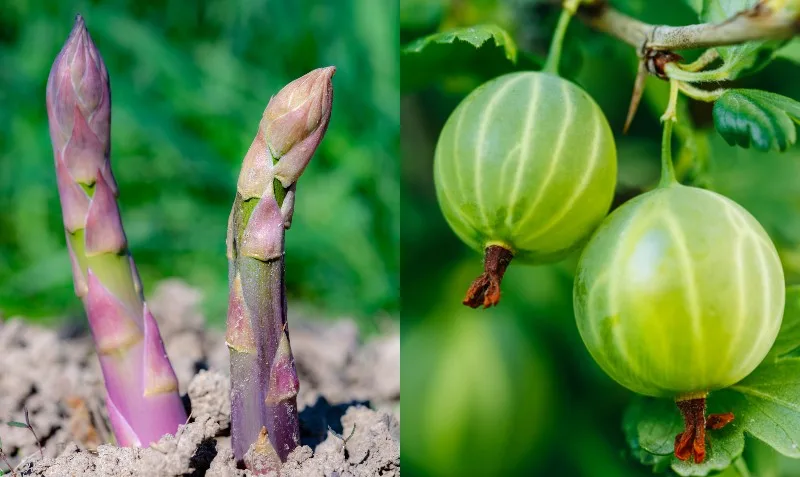
Lettuce grows easily almost anywhere, making it the perfect crop for cool weather. Its fresh and sometimes peppery notes to the palette also please at any meal.
When you plant your own lettuce, it provides lots of leafy greens for harvesting. You can also share some with family, friends and neighbors.
Lettuce, with its dense, yet shallow roots, won’t mind being planted in a cold frame, a row in the garden or a space-saving trough. That means anyone can grow lettuce, even if they don’t have a garden.
Broad lettuce leaves do well absorbing light so plants can adapt to spots in the garden that get only a half a day of sun.
How to Plant Lettuce
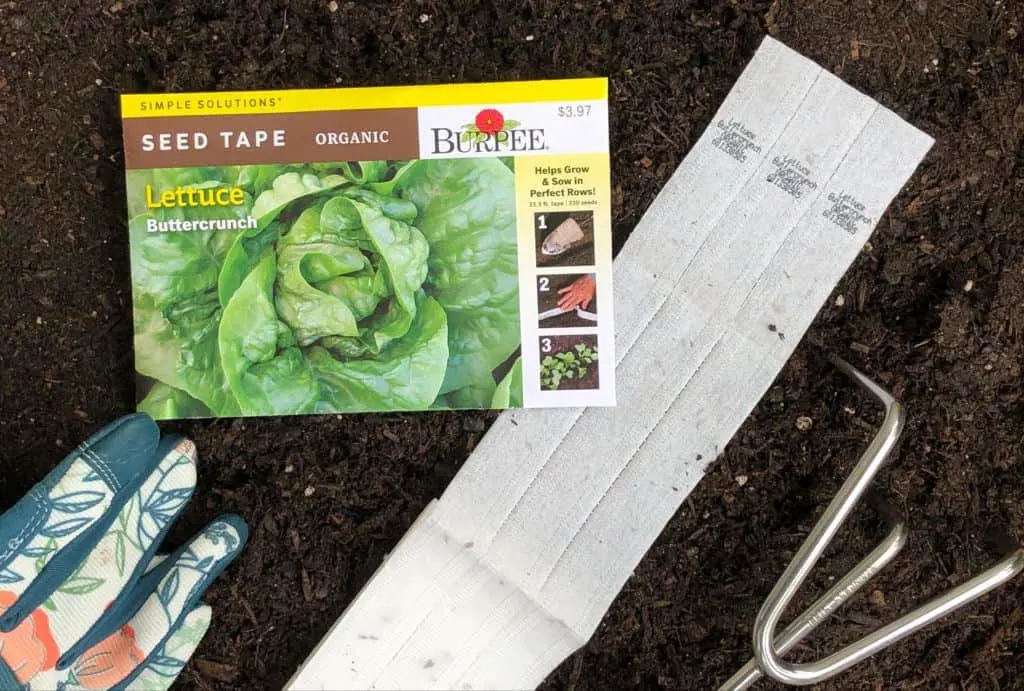
To plant lettuce, first, choose your favorite variety or plant several types. Seed suppliers, such as Burpee and others, now make seed tape making the job of sowing seeds easier.
Using seed tape may cost a bit extra but it saves time and provides the exact spacing needed between your future lettuce plants. Lucky for us, making your own DIY seed tape is incredibly easy and costs pennies on the dollar.
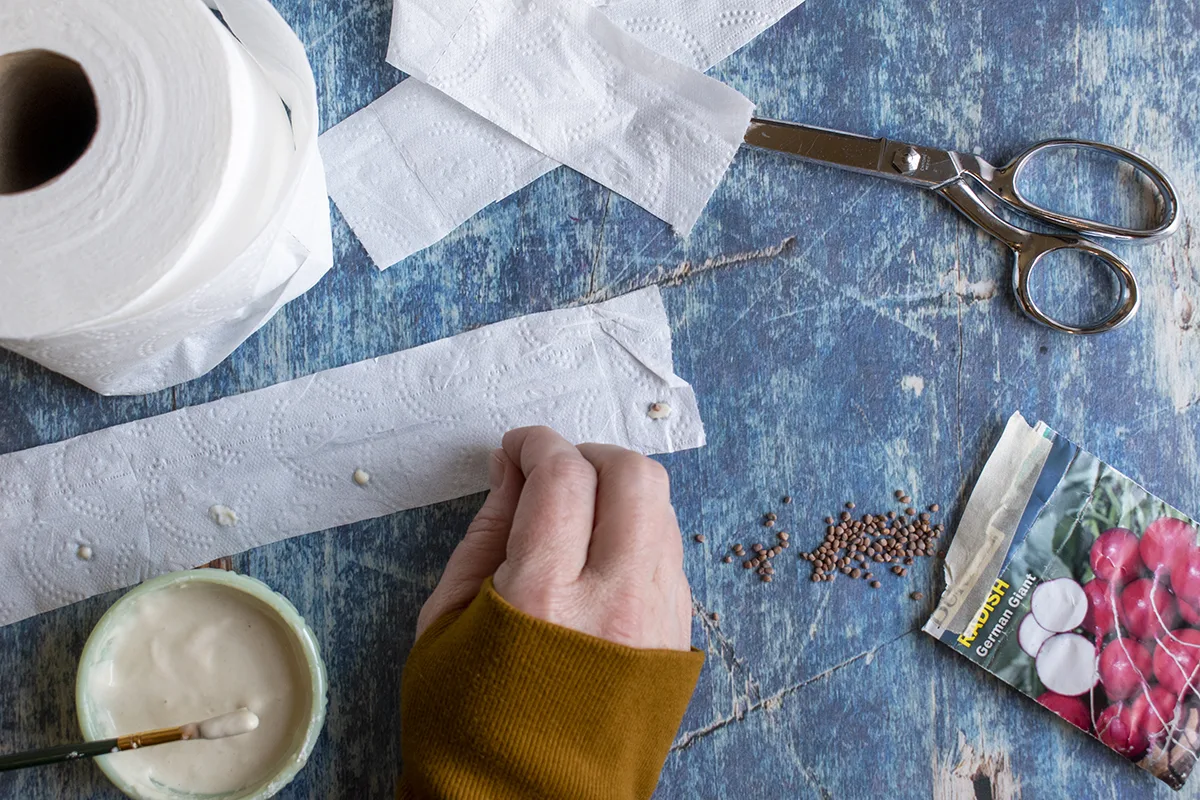
For an economical option, plant seeds and space them out yourself.
Before planting, enrich your soil with compost, either store bought or from your own compost pile. Another option is using soil specifically made for raised bed gardens.
Once your soil is ready to go, plant lettuce in full sun. However, the beauty of lettuce is that it can also handle part shade.
Sow your seeds at a 1/4-inch depth, spaced 1-inch apart when the soil is above 4 degrees Celsius (40 degrees Fahrenheit).
If using seed tape, place it in the soil. Use a hand cultivator or drag a finger in the soil to create the indentation in your soil for seed planting. Cover seeds or seed tape with extra soil.
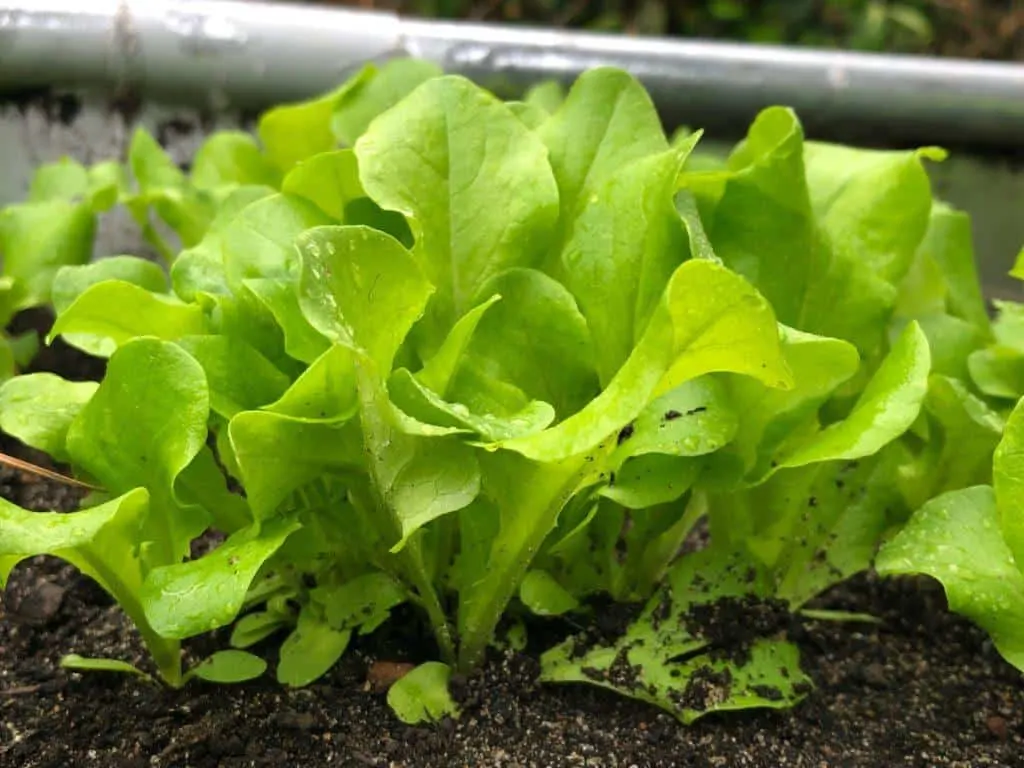
Seed germination takes from 2 to 10 days, depending on lettuce variety. Hand pull any weeds that may sprout around seedlings so they don’t rob your plants of nutrients or water.
Every two weeks, consider adding successive plantings in the garden until two weeks before the first fall frost.
Start with early lettuce varieties, then switch to heat-tolerant lettuce for summer and then back to a cool season lettuce for fall.
Be sure to water lettuce at regular intervals, unless rain is helping your crop along.
How to Harvest Lettuce
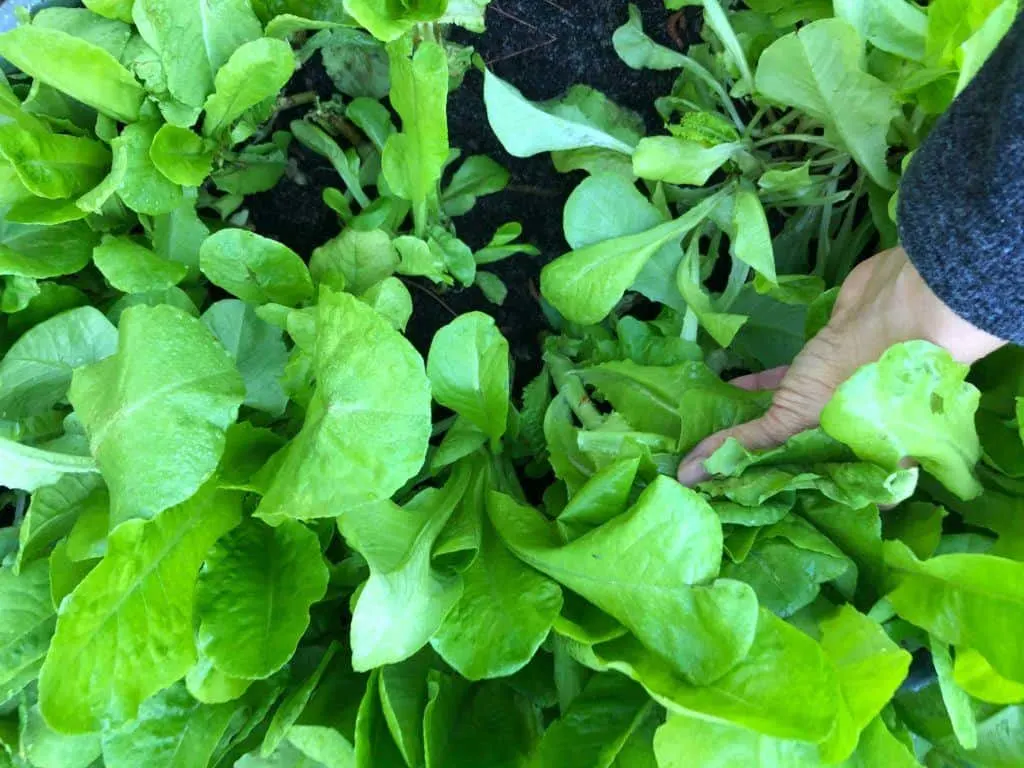
When you plant looseleaf and butterhead lettuce varieties, leaves can be harvested at almost any time. It’s also possible to harvest just the outer leaves of varieties such as romaine.
Other lettuce varieties will mature in 45 to 55 days, though heading varieties take longer. For starters, romaine takes 75 to 85 days and crisphead takes 70 to 100 days.
The crop pictured above features Butterhead European Bibb lettuce. This variety does not bolt, making it a gardener’s favorite.
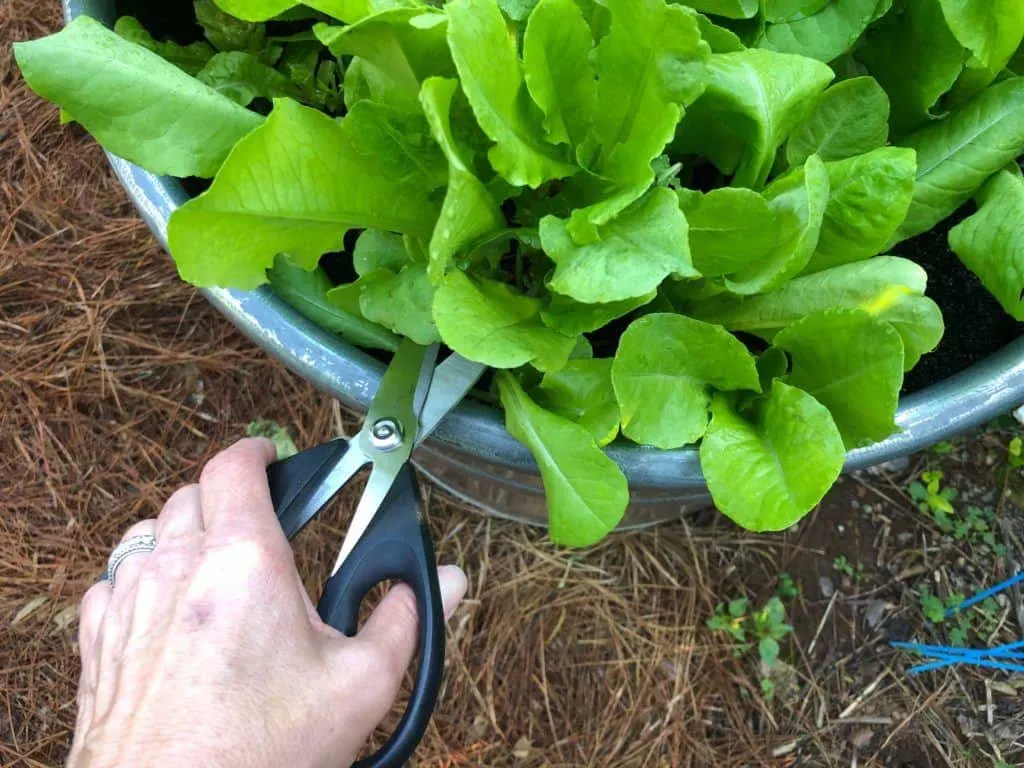
The best time to harvest lettuce is early in the morning when leaves are at their sweetest and full of moisture. That said, if you’re serving salad at night, these tender leaves will wilt easily so refrigerate before serving to hold freshness.
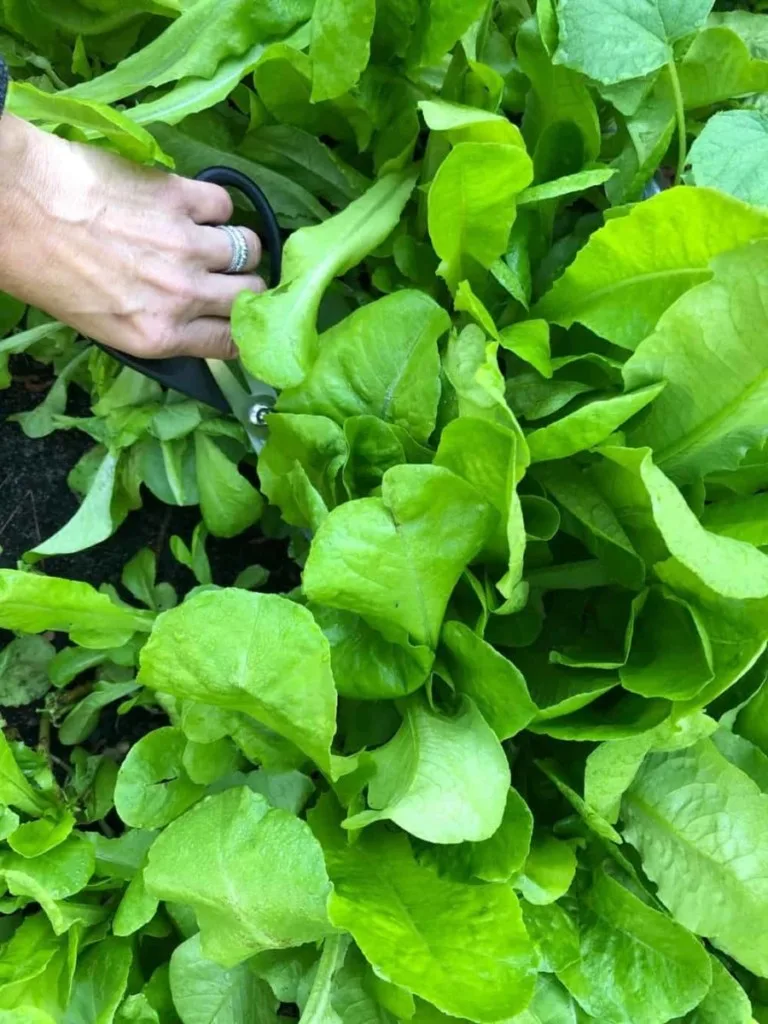
Get started by grabbing a pair of clean and sharp garden scissors or kitchen shears. Cut the outer leaves about 2 inches above the crown to ensure continuous growth.
After cutting leaves, help your lettuce crop along with an organic vegetable fertilizer to encourage more growth.
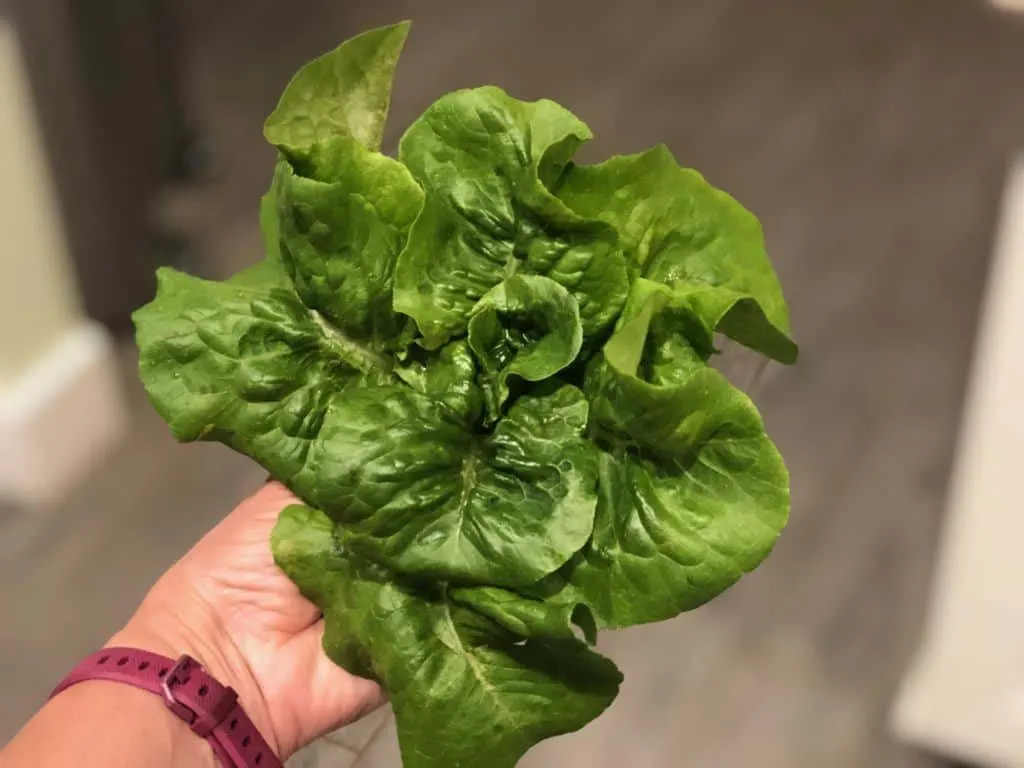
To harvest heads of lettuce, including Buttercrunch, crisphead, Batavia and romaine, cut the plant right at the soil line.
If you see an elongated crown on the lettuce plant, pull it up and compost. It’s past its prime.
Tip: Harvest sooner rather than later to avoid a bitter lettuce flavor.
When temperatures dip below 2 degrees celsius, consider covering plants with a row cover, cloche or other apparatus. Covering plants protects them from wind, frost and freezing temperatures, let alone freezing rain and snow.
It also helps extend the growing season.
Read Next:

Get the famous Rural Sprout newsletter delivered to your inbox.
Including Sunday musings from our editor, Tracey, as well as “What’s Up Wednesday” our roundup of what’s in season and new article updates and alerts.


